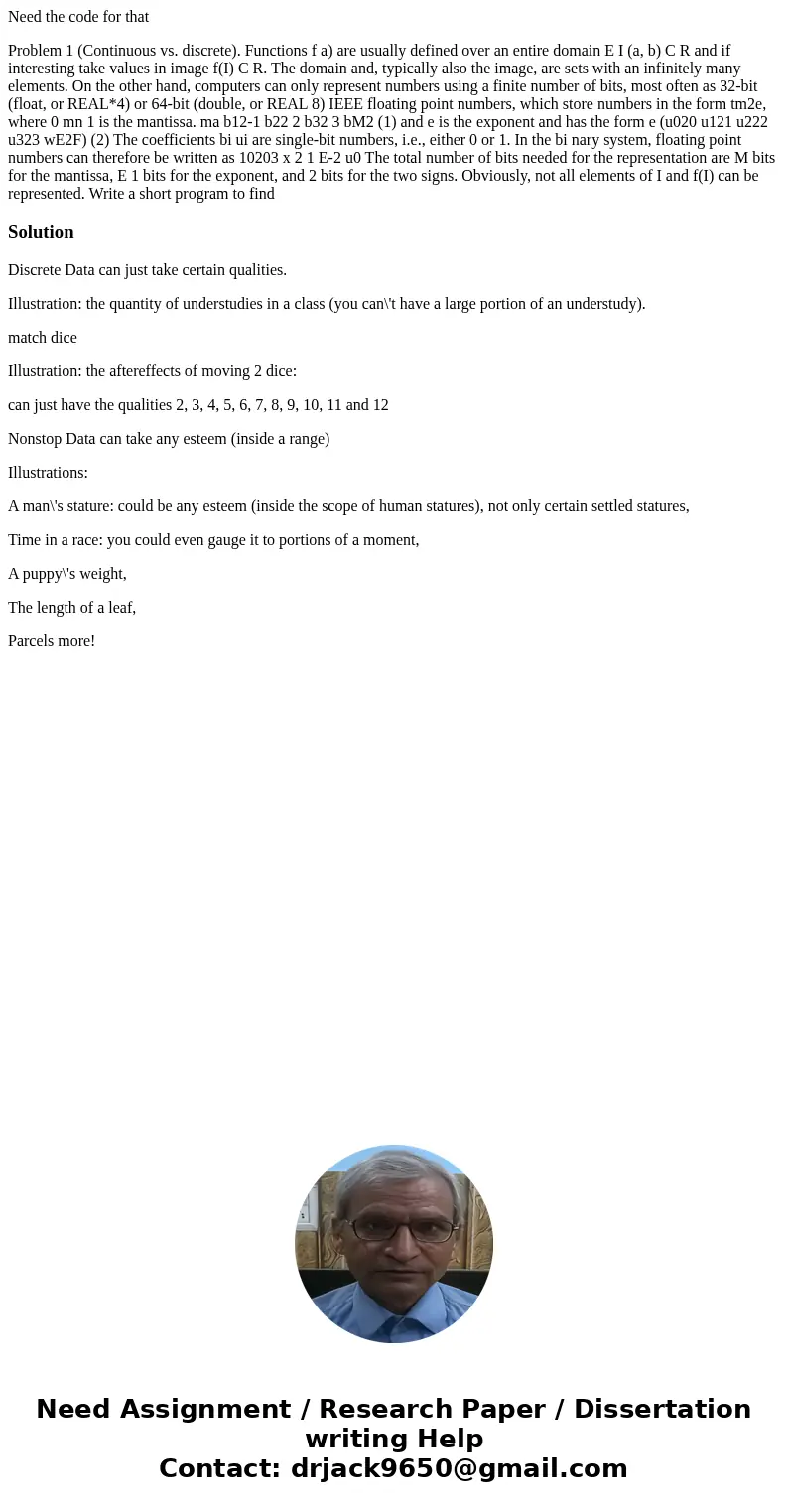Need the code for that Problem 1 Continuous vs discrete Func
Need the code for that
Problem 1 (Continuous vs. discrete). Functions f a) are usually defined over an entire domain E I (a, b) C R and if interesting take values in image f(I) C R. The domain and, typically also the image, are sets with an infinitely many elements. On the other hand, computers can only represent numbers using a finite number of bits, most often as 32-bit (float, or REAL*4) or 64-bit (double, or REAL 8) IEEE floating point numbers, which store numbers in the form tm2e, where 0 mn 1 is the mantissa. ma b12-1 b22 2 b32 3 bM2 (1) and e is the exponent and has the form e (u020 u121 u222 u323 wE2F) (2) The coefficients bi ui are single-bit numbers, i.e., either 0 or 1. In the bi nary system, floating point numbers can therefore be written as 10203 x 2 1 E-2 u0 The total number of bits needed for the representation are M bits for the mantissa, E 1 bits for the exponent, and 2 bits for the two signs. Obviously, not all elements of I and f(I) can be represented. Write a short program to findSolution
Discrete Data can just take certain qualities.
Illustration: the quantity of understudies in a class (you can\'t have a large portion of an understudy).
match dice
Illustration: the aftereffects of moving 2 dice:
can just have the qualities 2, 3, 4, 5, 6, 7, 8, 9, 10, 11 and 12
Nonstop Data can take any esteem (inside a range)
Illustrations:
A man\'s stature: could be any esteem (inside the scope of human statures), not only certain settled statures,
Time in a race: you could even gauge it to portions of a moment,
A puppy\'s weight,
The length of a leaf,
Parcels more!

 Homework Sourse
Homework Sourse